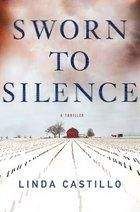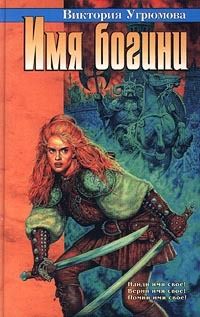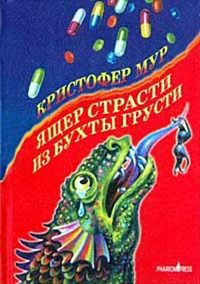Since its inception in 1815, Painters Mill’s population has remained steady at about 5,300 people, a third of whom are Amish. Though the Amish keep to themselves for the most part, no one is really a stranger, and everyone knows everyone else’s business. It’s a wholesome town. A nice place to live and a raise a family. It’s a good place to be the chief of police. Unless, of course, you have a vicious, unsolved murder on your hands.
Sandwiched between Kidwell’s Pharmacy and the volunteer fire department, the police station is a drafty cave carved into a century-old brick building that had once been a dance hall. I’m greeted by Mona Kurtz, my third-shift dispatcher, as I push open the door and enter the reception area. She looks up from her computer, flashes an over-the-counter white smile and waves. “Hey, Chief.”
She’s twentysomething with a mane of wild red hair and a vivacity that makes the Energizer Bunny seem lazy. She talks so fast I understand only half of what she says, which isn’t necessarily a bad thing since she usually relays more information than I need to hear. But she enjoys her job. Unmarried and childless, she doesn’t mind working the graveyard shift and has a genuine interest in police work. Even if that interest derives from watching CSI, it was enough for me to hire her last year. She hasn’t missed a day since.
Seeing the pink message slips in her hand and the fervor in her eyes, I wish I’d waited until her shift was over before arriving. I enjoy Mona and appreciate her enthusiasm, but I don’t have the patience this morning. I don’t pause on the way to my office.
Undeterred, she crosses to me and shoves a dozen or so messages into my hand. “The phones are ringing off the hook. Folks are wondering about the murder, Chief. Mrs. Finkbine wants to know if it’s the same killer from sixteen years ago.”
I groan inwardly at the power and speed of the Painters Mill rumor mill. If it could be harnessed to generate electricity, no one would ever have to pay another utility bill again.
She frowns when she glances down at the next slip. “Phyllis Combs says her cat is missing, and she thinks it might be the same guy.” She looks at me with wide brown eyes. “Ricky McBride told me the vic was . . . decapitated. Is it true?”
I resist the urge to rub at the ache behind my eyes. “No. I’d appreciate it if you’d do your best to nip any rumors in the bud. There are going to be a lot flying around in the next few days.”
“Absolutely.”
I look down at the pink slips and decide to put her enthusiasm to good use. “Call these people back. Tell them the Painters Mill PD is investigating the crime aggressively, and I’ll have a statement in the next edition of the Advocate.” The Advocate is Painters Mill’s weekly newspaper, circulation four thousand. “If you get any media inquiries, tell them you’ll fax a press release this afternoon. Everything else is ‘no comment,’ you got that?”
She hangs on to every word, looking a little too excited, a little too intense. “I got it, Chief. No comment. Anything else?”
“I could use some coffee.”
“I got just the thing.”
I envision one of her soy-espresso-chocolate concoctions and shudder. “Just coffee, Mona. And some aspirin if you have it.” I start toward the sanctuary of my office.
“Oh. Sure. Milk. No sugar. Is Tylenol okay?”
A question occurs to me just as I reach my office. I stop and turn to her. “Has anyone filed a missing person report for a young female in the last few days?”
“I haven’t seen anything come across the wire.”
But it’s still early. I know the call will come. “Check with the State Highway Patrol and the Holmes County sheriff’s office, will you? Female. Caucasian. Blue. Dark blonde. Fifteen to thirty years of age.”
“I’m on it.”
I walk into my office, close the door behind me and resist the urge to lock it. It’s a small room crowded with a beat-up metal desk, an antique file cabinet speckled with rust, and a desktop computer that grinds like a coffee mill. A single window offers a not-so-stunning view of the pickup trucks and cars parked along Main Street.
Working off my coat, I drape it over the back of my chair, hit the power button on the computer and head directly to the file cabinet. While the computer boots, I unlock the cabinet, tug out the bottom drawer and page through several case files. Domestic disputes. Simple assault. Vandalism. The kinds of crimes you expect in a town like Painters Mill. The file I’m looking for is at the back. My fingers pause before touching it. I’ve been the chief of police for two years, but I’ve never been able to bring myself to look at the file. This morning, I don’t have a choice.
The folder is fat and brown with frayed edges and metal clasps that are broken from use. The peeling label reads: Slaughterhouse Murders, Holmes County, January 1992. I take the file to my desk and open it.
My predecessor, Delbert McCoy, was a stickler for detail and it shows in his record-keeping. A typed police report with dates, times and locations stares up at me. I see witness names replete with contact information and background checks. It appears every facet of the investigation was carefully documented. Except for one incident that was never reported to the police . . .
I page through the file, taking in the highlights. Sixteen years ago a killer stalked the quiet streets and back roads of Painters Mill. Over a two-year period he murdered four women with indiscriminate savagery. Because of the killer’s MO, exsanguination, which is similar to the “bleeding” of livestock during slaughter, some headline-grabbing reporter dubbed him “The Slaughterhouse Killer” and the name stuck.
The first victim, seventeen-year-old Patty Lynn Thorpe, was raped and tortured, her throat slashed. Her body was dumped on Shady Grove Road—just two miles from where T.J. discovered the body this morning. A chill hovers at the base of my spine as I read the autopsy report.
ANATOMICAL SUMMARY:
I. Incised wound of neck: Transection of left common carotid artery.
I skim the Notes and Procedures, External Examination and other details until I find what I’m looking for.
DESCRIPTION OF INCISED NECK WOUND:
The incised wound of the neck measures eight centimeters in length. Said wound is transversely oriented from the midline and upwardly angulated toward the left earlobe. The left common carotid artery is transected with hemorrhage in the surrounding carotid sheath. Fresh hemorrhage and bruising is present along the entire wound path.
OPINION:
This is a fatal incised wound or sharp force injury associated with the transection of the left carotid artery with exsanguinating hemorrhage.
It is strikingly similar to the wound on the body discovered this morning. I continue reading.
DESCRIPTION OF SECONDARY STAB WOUND:
A secondary abdominal wound located above the navel is noteworthy. The wound is irregular in shape, measuring 5 centimeters by 4 centimeters in height and width, respectively, with minimal depth of penetration at 1.5 centimeters. Fresh hemorrhage is noted along the wound path, which goes through the skin and subcutaneous tissue, though the penetration did not breach muscle. The wound was ante mortem.
OPINION:
This is a superficial cutting wound and is found to be non-life-threatening.
Again, very similar to the wound carved into the abdomen of the victim found this morning.
I turn to the police report where Chief McCoy scribbled a footnote.
The abdominal wound appears to be the capital letters V and I or perhaps the Roman numeral VI. The laceration on the victim’s neck was not the wild slash of a crazed killer, but the calculated incision of someone who knew what he was doing and wanted a specific end result. The perpetrator used a knife with a nonserrated blade. The carving on the victim’s abdomen was not made public.
Below, the report notes that the victim sustained vaginal and rectal trauma, but smears sent to the lab didn’t return foreign DNA.
I flip through several more pages, stopping at Chief McCoy’s handwritten notes.
No fingerprints. No DNA. No witnesses. Not much to go on. We continue to work the case and follow up on every lead. But I believe the murder was an isolated incident. A drifter passing through on the railroad.
His words would come back to haunt him.
Four months later sixteen-year-old Loretta Barnett’s body was discovered by fishermen on the muddy bank of Painters Creek. She’d been accosted in her home, sexually assaulted, taken to an unknown location where her throat was cut. It was later ascertained that her body had been thrown from a covered bridge west of town.
At that point, McCoy called the FBI to assist. Forensics suggested the killer used a stun gun to subdue his victims. Both victims sustained genital trauma, but no DNA was found, which, according to Special Agent Frederick Milkowski, indicated the killer had had either worn a condom or resorted to foreign object rape. The killer may have shaved his body hair.
Bruising at the victim’s ankles indicated she had been hung upside down by some type of chain until she bled out. Most disturbing was the discovery of the Roman numeral VII carved into the flesh of her abdomen.
At that point it became evident the police had a serial murderer on their hands. Because the victims were murdered via exsanguination, a practice associated with many slaughterhouses, McCoy and Milkowski turned to the local slaughterhouse for clues.
I read McCoy’s investigative notes:
In an informal interview, J.R. Purdue of Honey Cut–Purdue Enterprises, the corporate entity that owns and operates the Honey Cut Meat Packing plant, states, “The wounds are consistent with the type of incision used to bleed livestock, but on a smaller scale . . .”
Every person who’d ever worked for the Honey Cut Meat Packing plant was questioned and fingerprinted. Male employees were asked to give DNA samples. Nothing ever came to fruition. And the killing continued . . .
By the end of the following year, four women were dead. Each died via exsanguination. Each suffered unspeakable torture. And each had a successive Roman numeral carved into her abdomen, as if the killer were keeping some twisted tally of his carnage.
Sweat breaks out on the back of my neck when I look at the crime scene and autopsy photos. The similarities to the murder this morning are undeniable. I know what the citizens of Painters Mill will think. That the Slaughterhouse Killer is back. There are only three people on this earth who know that is impossible, and one of them is me.
A knock on the door makes me jump. “It’s open.”
Mona walks in and sets a cup of coffee and a Sam’s Club–size bottle of Tylenol on my desk. Her eyes flick to the folder. “There’s a woman from Coshocton County on line one. Her daughter didn’t come home last night. Norm Johnston is on line two.”
Norm Johnston is one of six town councilmen. He’s a pushy, self-serving bastard and all-around pain in the ass. He hasn’t liked me since I busted him for a DUI last spring and dashed his hopes of climbing Painters Mill’s political ladder all the way to mayor. “Tell Norm I’ll call him back,” I say and hit line one.
“This is Belinda Horner. I haven’t heard from my daughter, Amanda, since she left to go out with her girlfriend Saturday night.” The woman is talking too fast. Her voice is breathless and raw with nerves. “I assumed she’d spent the night with Connie. She does that sometimes. But I didn’t hear from her this morning. I called and found out no one has seen her since Saturday night. I’m really getting worried.”
Today is Monday. I close my eyes, praying the body lying on a slab in the Millersburg morgue isn’t her daughter. But I have a bad feeling in my gut. “Has she stayed gone this long before, ma’am? Is this unusual behavior for her?”
“She always calls to let me know if she’s staying out.”
“When’s the last time her friend saw her?”
“Saturday night. Connie can be incredibly irresponsible.”
“Have you contacted the State Highway Patrol?”
“They told me to check with the local police department. I’m afraid she’s been in a car accident or something. I’m going to start calling hospitals next.”
I grab a pad and pen. “How old is your daughter?”
“Twenty-one.”
“What does she look like?”
She describes a pretty young woman who fits the description of the victim. “Do you have a photo?” I ask.
“I have several.”
“Can you fax the most recent one to me?”
“Um . . . I don’t have a fax machine, but my neighbor has a computer and scanner.”
“That’ll work. Scan the photo and e-mail it as an attachment. Can you do that?”
“I think so.”
As I jot her contact information, my phone beeps. I look down and see all four lines blinking wildly. I ignore them and give her my e-mail address.
My stomach is in knots by the time I hang up, but I have a sinking suspicion Belinda Horner is going to have a much worse day than me.
Mona knocks and peeks in. “I got the state highway patrol on one. Channel Seven in Columbus is on line two. Doc Coblentz is on three.”
I answer line three with a curt utterance of my name.
“I’m about to start the autopsy,” the doc says. “I thought you might want a heads-up.”
“I’ll be there in fifteen minutes.”
“You get an ID yet?”
“I’m working on something now.”
“God help the family.”
God help us all, I silently add.
I spend ten minutes returning calls and then open my e-mail program. When I hit Send/Receive, an e-mail with an attachment from J. Miller appears in my in-box.
I open the attachment and find myself staring at the image of a young woman with pretty blue eyes, dark blonde hair and a dazzling smile. The likeness is unmistakable. And I know Amanda Horner will never smile like that again.
Hitting Doc Coblentz’s direct number, I wait impatiently until he picks up. “Hold off on the autopsy.”
“I assumed you wanted a rush.”
I tap the Print key on my computer. “I do, but I think her parents will want to see her before you start cutting.”
Coblentz makes a sound of sympathy. “I don’t envy you your job.”
At this moment I hate my job with a passion I cannot describe. “I’m going to drive down to Coshocton County and pay the mother a visit. Can you give the chaplain at the hospital a call? Ask him to meet us at the morgue. We’re going to need him.”
CHAPTER 4
The Horners live in the Sherwood Forest mobile home park on Highway 83 between Keene and Clark. The sky is as hard and gray as concrete as I turn onto the gravel street. Next to me, Glock studies the map I printed before leaving.





